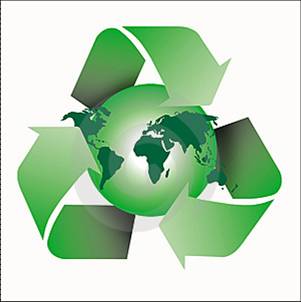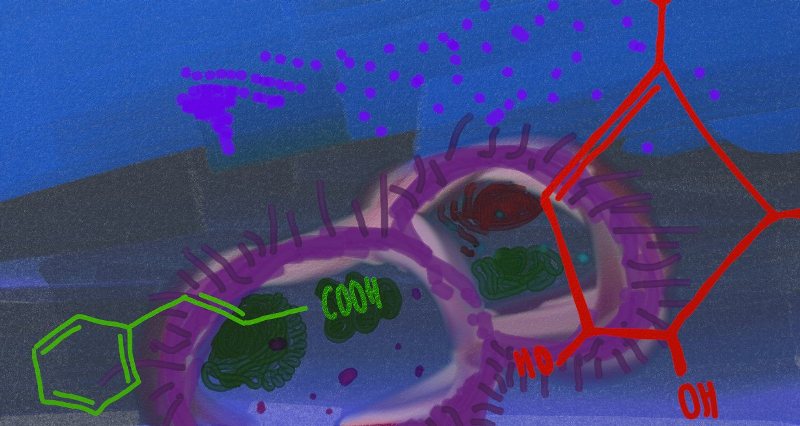Team:Alberta-North-RBI E/Waiting4Pizza
From 2012e.igem.org

Contents |
The Problem/Opportunity
|
Due to environmental concern, government regulations and economic considerations, there has been a consistent increased effort in recycling endeavours over the past years. Several hundred million metric tons of municipal solid waste is disposed of in Canada and the United States annually. Paper products alone account for approximately 45% of municipal solid waste by weight before recycling (N. Lark et al.). As a result, recycling paper products not only affects the upstream processes in paper production (where raw materials are acquired), but also has consequences on the downstream portion of paper use (waste-disposal). Recycled paper processing plants use paper as their feedstock and recover fibre that can be used to produce new paper products. Paper fibre cannot, however, be recycled endlessly. It is generally accepted that a fibre can be used four to six times before it becomes too short to be utilized in new paper products. This unusable fibre accounts for 15-20% of the recycled fibres and is typically disposed of in a waste stream to landfills (N. Lark et al.). The major constituent of these paper fibres is cellulose, a homopolysaccharide made up of β-D-glucose. Ergo, the unusable, short fibre in the waste stream of paper recycling plants is a significant source of potentially exploitable cellulose. Aromatics represent a potentially lucrative chemical endpoint for this cellulose, having high price per unit mass and a sustainable market in both the pharmaceuticals and cosmetics industries. The conversion of this waste into valuable industrial chemicals is a relatively unexplored business opportunity and is desirable from the standpoint of green and clean processing. Our SolutionAs technologies continue to improve, there has been increasing interest in exploring the use of biomass as a renewable resource. Biomass is typically a by-product of an industrial process and considered waste. In particular, the paper sludge produced by paper recycling plants is presently disposed of via landfill or burnt. This is a significant source of potentially exploitable cellulose that can not only be used to produce high-value chemicals but will also have a positive impact on waste management. Additionally, paper sludge is an attractive feedstock compared to other lignocellulosic biomass because is processed prior to its utilization and requires no pre-treatment as a result. Many studies have concentrated on the conversion of the cellulose in the paper waste to different types of value-added chemicals. Primarily, it has been considered for conversion to ethanol (Yamshita et al. 2006; Vamvuka et al. 2009; Kang et al. 2010, 2011) and lactic acid (Marques et al. 2008; Mukhopadhyay 2009). Our business plan focuses on the production of aromatics from this cellulose. Aromatics represent a potentially lucrative chemical endpoint, having high price per unit mass and a sustainable market in both the pharmaceuticals and cosmetics industries. Our company’s proposed process has two parts: in the first, cellulose from waste sludge from recycling plants is converted into glucose; in the second, glucose from the first part is used as a feedstock for the production of aromatic chemicals. In the glucose-aromatic conversion, we plan to use only a single metabolic pathway with “on and off switches” at each “step”. This gives us the freedom to produce any intermediary compounds in addition to the natural end product. The current proposed pathway will allow us to produce either shikimate or cinnamic acid derivatives using the method described above. Possible switch activators include temperature pH, or the addition of an inhibiting chemical such as phosphate. Our solution encompasses two sections: Process Design Genetics
Our Competitive AdvantageUpcycled Aromatics’ main competitive advantage lies in our feedstock. As mentioned previously, it is impossible for a recycling plant to process the same paper more than a few times before the fibres are deemed too short and disposed of. Our revolutionary strategy is to utilize these once useless fibres as the feedstock for our process, ultimately turning what was once waste into valuable industrial chemicals important in both the pharmaceutical and cosmetics industries. Our strategy ultimately allows us to save significantly on operating costs, and since our initial prototype facility will be located at a recycling plant onsite, costs associated with the feedstock will be negligible if not zero. This unique approach, while increasing our margins, also gives us the opportunity to funnel the money saved into other endeavours, such as expansion or research. Furthermore, the clean, innovative waste-to-value approach taken by Upcycled Aromatics enables us to tap into the ever-expanding green market. As consumers become more and more concerned with the environmental impact of their choices, the larger the edge that Upcycled Aromatics will have over traditional chemical synthesis approaches. needs additional data/info maybe The Competitive LandscapeShikimic acid is a vital precursor to the production of the anti-influenza drug Tamiflu. Taking into account the recent H1N1 and H5N1 influenza outbreaks and recent reports of shikimic acid shortages, demand for the drug seems poised to increase in the near future. Currently, pharmaceuticals giant Roche produces the majority of the world's supply of shikimic acid, holding an effective monopoly on the market. Their method of extraction involves isolating the compound from Chinese star anise, at a rate of approximately 30g of seed to very 1g of shikimate. Although some research has been done on using genetically modified E. coli fermentation to artifically produce commerically viable amounts of the chemical, Upcycled Aromatics can offer a unique, green solution to potential shortages in the shikimate supply.
The G-Map
View Larger Map Countdown
Concept Art
Flickr badge
www.flickr.com
This is a Flickr badge showing public photos and videos from Upcycled Aromatics. Make your own badge here.
Business model |
 "
"







